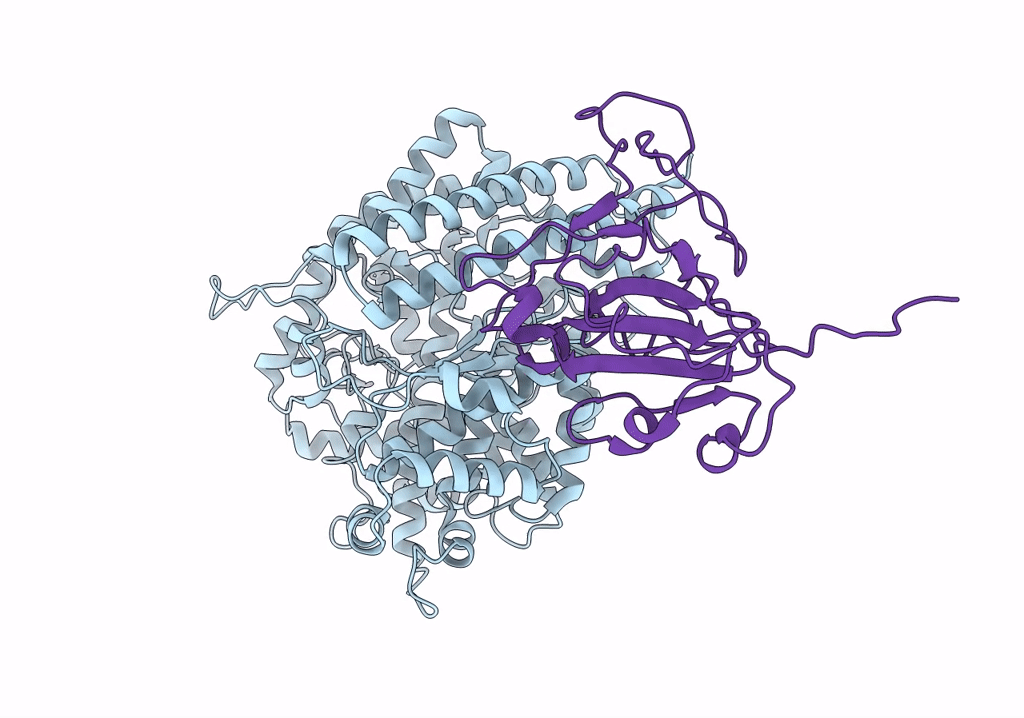
Deposition Date
2022-01-29
Release Date
2022-11-09
Last Version Date
2025-07-02
Entry Detail
PDB ID:
7WSG
Keywords:
Title:
Cryo-EM structure of SARS-CoV spike receptor-binding domain in complex with sea lion ACE2
Biological Source:
Source Organism:
Mammalia (Taxon ID: 40674)
Severe acute respiratory syndrome coronavirus (Taxon ID: 2901879)
Severe acute respiratory syndrome coronavirus (Taxon ID: 2901879)
Host Organism:
Method Details:
Experimental Method:
Resolution:
3.03 Å
Aggregation State:
PARTICLE
Reconstruction Method:
SINGLE PARTICLE


